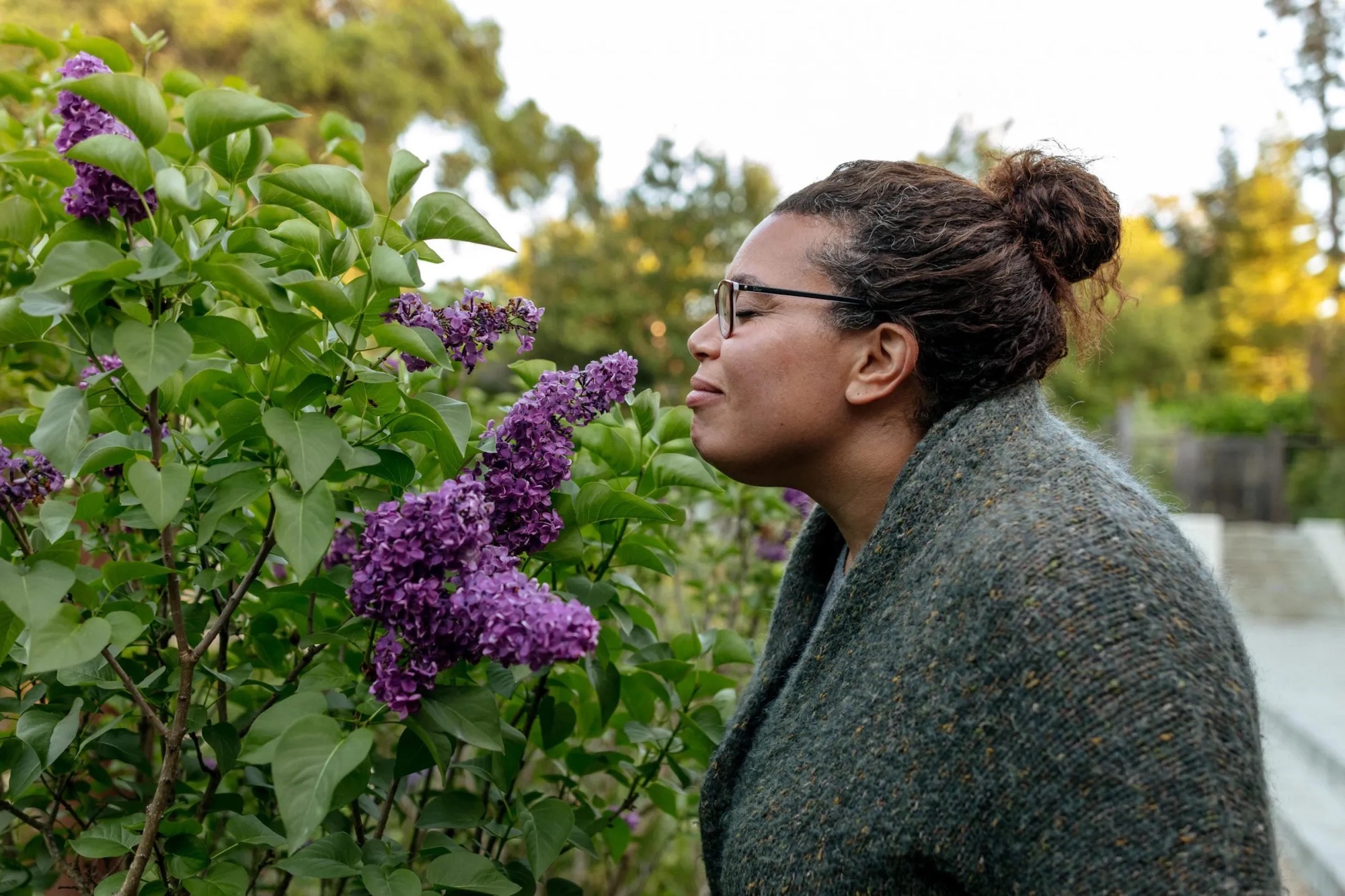
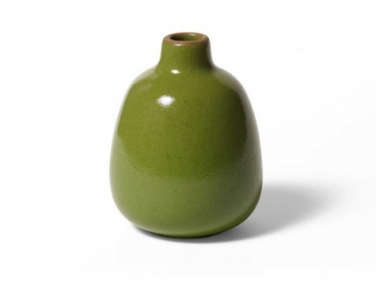

Every time we come across an edible landscape designed by Oakland-based Leslie Bennett, we are struck by the magic and beauty she brings to something as practical as a kitchen garden. She recently wrote an entire book on how she does it (Garden Wonderland hit bookstores this month). And today, she’s pulling back the curtain a little more on what inspires her work.
How did a former attorney specializing in cultural property, landscape preservation, and land use law come to actually work with the land? “Learning how to grow food was life-changing for me,” says the Bay Area native, who apprenticed at organic and biodynamic farms for three years before starting Pine House Edible Gardens. “I’ve been figuring out how to design beautiful, productive landscapes ever since, partly by trial and error, and partly through collaboration with the really talented and skilled group of designers, landscape architects, and farmers who have been a part of my team for the last decade-plus.”
Below, she reveals her “half pruning” method for longer blooms in the garden, her secret weapon for warding off slugs, and her favorite hardscaping material (that also happens to be cheap and child-friendly).
Photography by Rachel Weill for Garden Wonderland, unless otherwise noted.
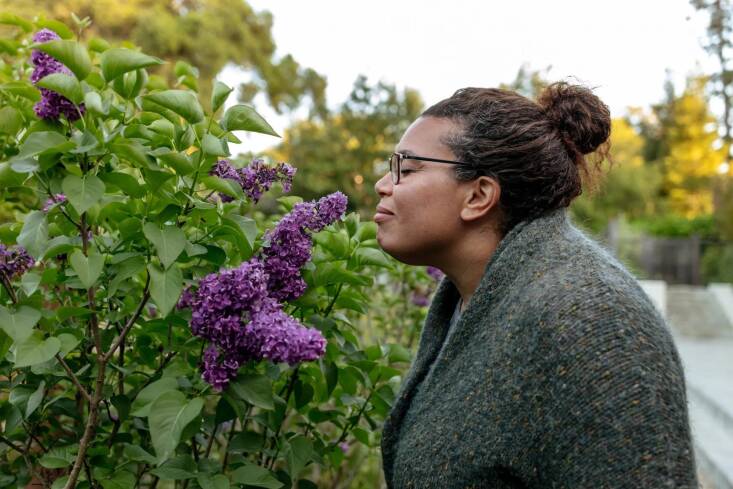
I remember often being in our family’s suburban backyard when I was growing up. My brother and I were enthralled with the snails that lived on the big citrus trees and we decided to start a snail farm. We set up a big box, filled it with leaves and fruit from the orange trees, and plucked all the snails off the plants and put them in the box, where we kept them alive and fed for at least a few days! We thought it was the coolest thing ever and made my parents take photos of us with our new pets. Now a snail farm sounds so gross to me and makes me laugh. But of course, my two young kids now love observing the snails that live in our backyard and they have their own little bug boxes set up—I’m happy knowing that our family garden is nurturing their sense of curiosity and wonder about life and nature.
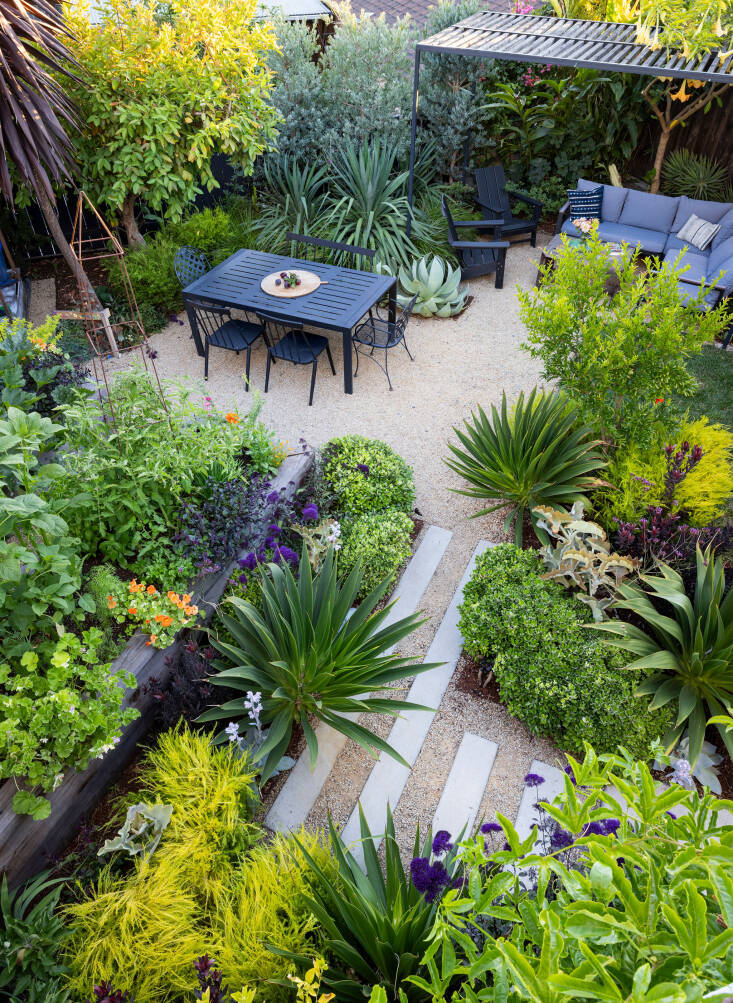
My garden aesthetic is personal, eclectic, and maximalist. I love layers!!
My new garden design book, Garden Wonderland, of course! Truly, I am in the phase right now where I look through it all the time and remember fondly the entire process of making it.
@justinablakeney really inspires me. I relate to her so much as a fellow mixed race Black woman, mother, and designer. I love her interior design aesthetic, which, like mine, tends toward personal expression, plants, layers, and maximalism. I also love seeing how she’s developed her authentic voice on social media, has grown her identity as an artist, and has been able to orient toward overall wellness. These are all areas I’m working on, too, and that I appreciate her modeling so authentically.
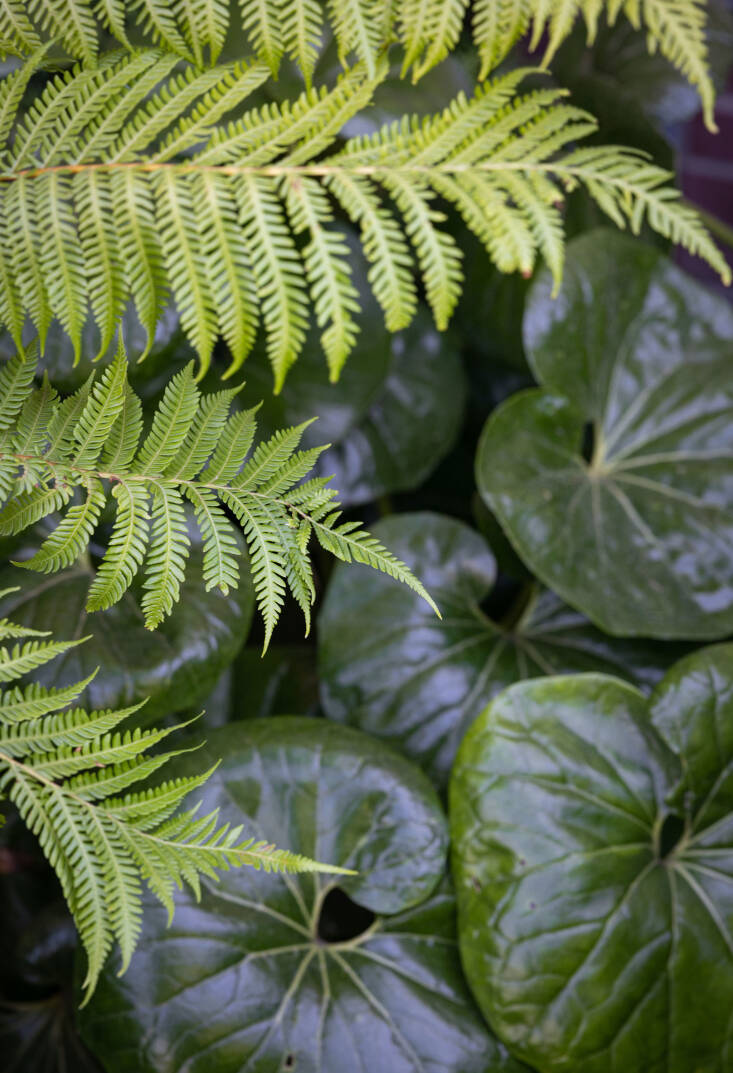
This changes every year or so, but right now I’ll go with Ligularia gigantea. The broad, glossy green foliage texture makes everything around it look incredible, so my team and I use it in designs whenever we can.
Culinary bay. Another one with glossy broad green foliage that is so easy to grow in a pot or in the landscape, is great for cooking, and has so many healing properties, too.
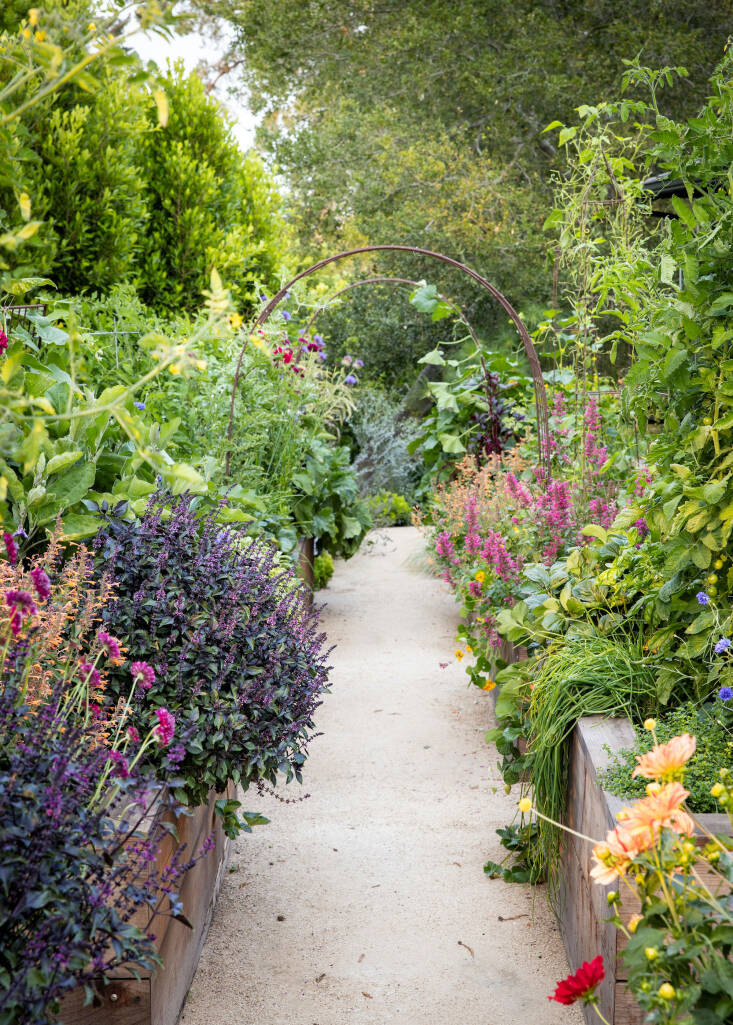
An edible garden can and should be beautiful to look at. I think that growing food and nourishing ourselves is essential, but there’s no reason for growing food to be a utilitarian practice. So much about growing food is about nourishing ourselves in other less tangible ways, especially creatively and spiritually—so I always encourage people to make their gardens as visually inspiring as they are productive.
Those beer traps for slugs really do work! We use them all the time in our client veggie beds.
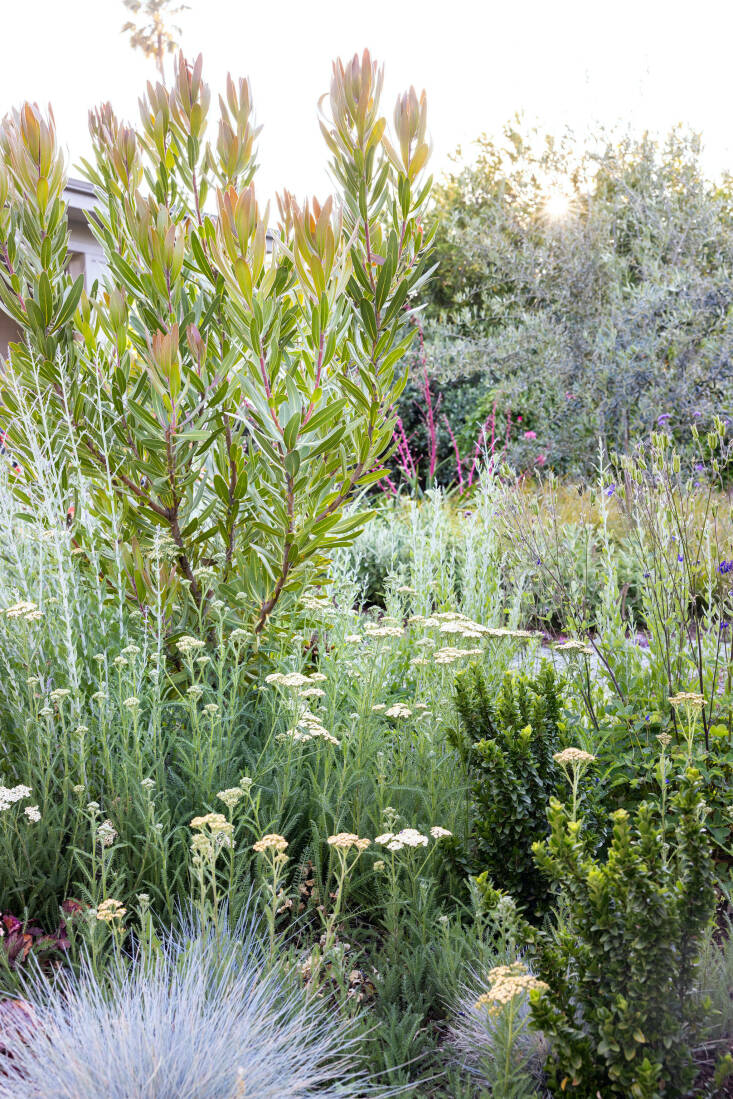
I love the technique of what I call “half pruning” flowering perennials like yarrow, nepeta, or even larger hydrangeas to keep the garden looking more floriferous and full while still cutting things back before they get too tired. When a plant needs to be pruned back but I don’t want it to be gone entirely from my garden view for so long, I’ll cut back half of the plant hard and give that side a few weeks to grow back in a bit, before I cut the other side. That way, I have some of the older blooms lasting longer in the garden, but I get a head start on the new regenerative growth and fresh flush of blooms on their way.
A simple bud vase from Heath Ceramics with whatever new bloom has popped up in the garden.
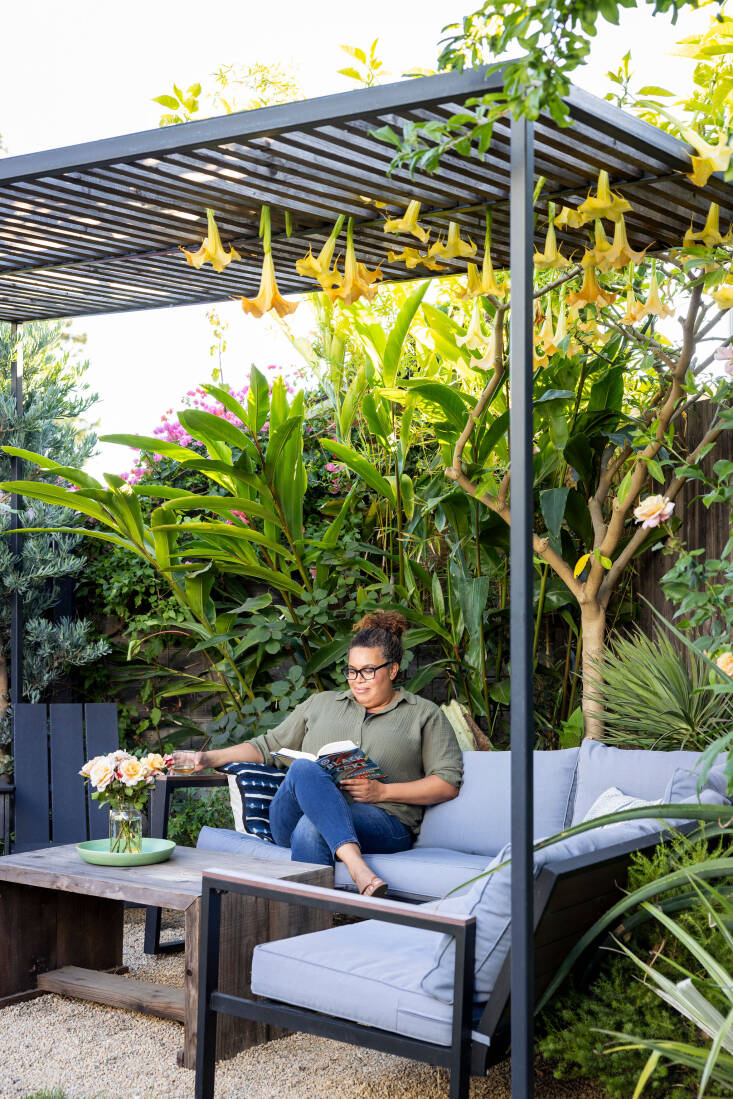
A really nice comfy chair to lounge in. Sitting on a comfy seat with great cushioning and beautiful plants all around me is my idea of heaven and I wish that for everyone.
Crushed gravel. It’s modern but timeless. Rustic but elegant. Plus it’s affordable, permeable (to help keep rainwater on site) and, as a bonus, is a great interactive play element for kids—they love digging in it and piling it up , it was like a built in construction set that kept my son occupied and happy in our backyard for many of his younger years.
I think everyone must say this but a set of nice Felco bypass pruners. I use mine for pruning in the garden and for cutting herbs and flowers for arrangements.
Flora Grubb in San Francisco is my team and my favorite place to go for garden inspiration. Their selection of plants is incredible and includes so many hard to find, low-water adapted varieties. Just walking through the space and seeing the combination of colors and textures is a delight, plus everybody who works there is so nice. I just love it.
I wish I had the space in my backyard to grow more cutting flowers—all the dahlias and the zinnias please! Maybe one day.
I love the High Line in New York. I know everybody does, but it’s really such an incredible example of placemaking with plants and design, I can’t not recommend that first.
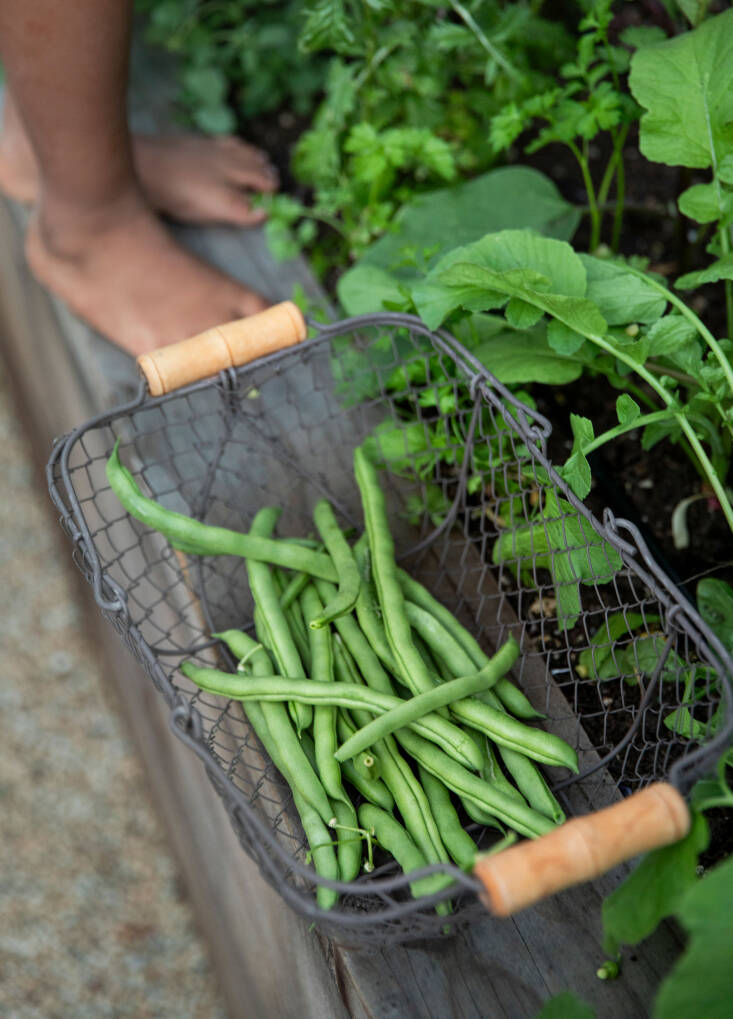
I absolutely love the feeling of harvesting food and flowers from my garden. When I pick something that’s ripe and ready to eat, or when I cut flowers that combine so beautifully (and they all do, because nature is gorgeous, not because I’m so great at flower arranging), it feels creative and joyful and satisfying. It’s a practice of self-care. I feel better about myself and my life and I want to do it again. So I keep on gardening and keep on harvesting, and I try to pass the practice on to my kids, too.
Thanks so much, Leslie! You can follow her on Instagram @pinehouseediblegardens.
See also:
Have a Question or Comment About This Post?
Join the conversation